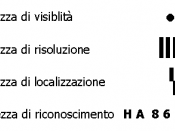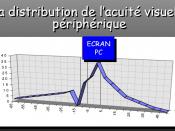IntroductionDown's Syndrome Vision Research Group defines Visual impairment as a reduction in vision because of a disorder or disease of the eye or brain. A person is considered to be "visually impaired" when their visual acuity is 20/70 or less in the better eye with best correction, or a visual field of 140 degrees or less in the better eye. Having 20/70 vision means that a person can see an object or symbol at 20 feet away while a non-visually impaired individual can see that same object or symbol 70 feet away.
Students with visual impairments cannot make normal progress in their schooling unless the teacher is prepared to adjust his or her teaching strategy. There are many elements that can cause visual impairments and the teacher needs to be aware of signs such as blinking often, squinting while looking at the chalkboard, having an unusual head tilt while reading or red or inflamed eyes.
If teachers can identify signs of visual impairments, they can do a couple of things; they can adjust the environment to make the student comfortable, they can change their teaching strategy to allow the student to learn and they can refer the student to the correct persons so that the student can get help.
Overview of the EyeOur eyes help us to obtain information from our environment. The human eye is similar to a camera; it collects, focuses, and transmits light through a lens to create an image of its surroundings. In a camera, the image is created on film or an image sensor while in the eye, the image is created on the retina; a thin layer of light-sensitive tissue at the back of the eye.
"Light rays enter the front of our eye through the clear cornea and lens. It is very important...



Good Job
You should have included Retinitis Pigmentosa. It is a rare vision disease that leads to the reduction of peripheral vision to tunnel vision. It is well researched, but if you include some of the rarer ones, for which there are no cure, people will be more aware.
0 out of 0 people found this comment useful.